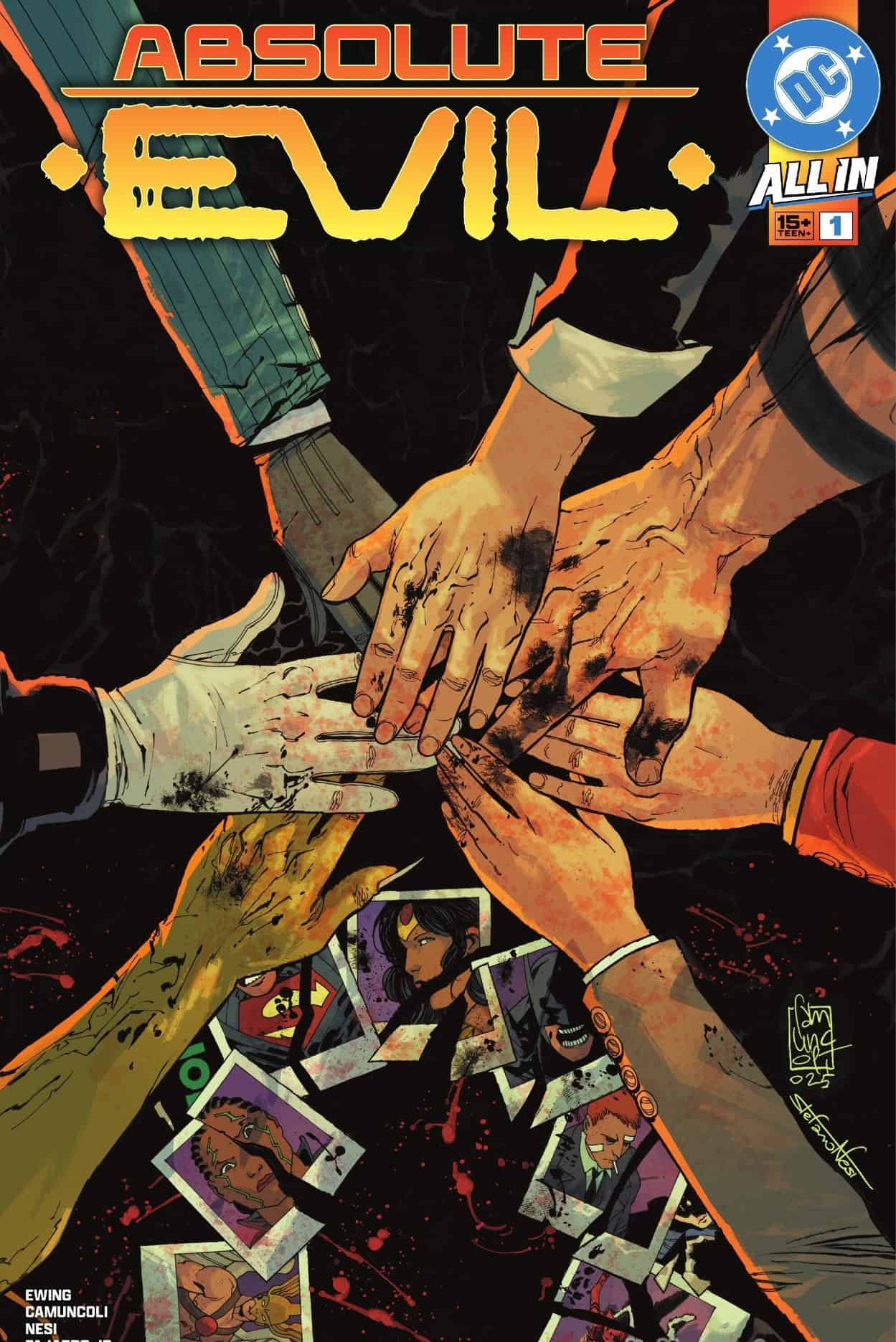Absolute Evil #1

Recap
Without heroes... without protection... without restraint... there is only ABSOLUTE EVIL.
The emergence of superheroes has caught the attention of the world... and it’s certainly caught the attention of the people who run it. Ra’s al Ghul, Veronica Cale, Elenore Thawne, Hector Hammond, and the mysterious Joker have worked at cross-purposes until now, but this growing threat requires new ways of thinking... and new partnerships. An insidious betrayal from within their ranks is imminent, and if they don’t take action, they’ll lose control of a planet that was built to be their playground!
Review
Absolute Evil #1 is exposition heavy with almost all of it being delivered sans elegance in a briefing sequence for a group of assembled nefarious characters. But the result is that Absolute Evil #1 is the most accessible DC Absolute Universe issue since the universe was created. The briefing is a big picture overview. As such, the reader won’t learn all the details of each series. But it’s enough to catch them up on the concepts and provide an entry into the Absolute Universe.
This exposition is worth it for the two major surprises at the end. Ewing does a slow build throughout Absolute Evil #1. The opening pages deliver unexpected revelations about Hawkman, Sandman, and Wildcat in the past. From there Ewing moves into the briefing on the present day which considerably reduces any sense of urgency and tension. The result is that the first of the two surprises comes out of nowhere, especially given how the issue opened. It’s not an exaggeration to call it shocking. The second surprise, eventually coming on the issue’s final page, is set up piece by piece. Readers might figure it out ahead of time (though it’s unlikely). Both of these revelations could be considered edgy for the sake of edgy, but they make sense within the Absolute Universe. These final pages are the big selling point for the issue.
One major detraction in Absolute Evil #1 is that it’s very nuts and bolts. It is a good starting point for new Absolute Universe readers, but it’s all setup and little story satisfaction. The shocking ending goes a long way to covering that up. And Ewing paces the issue very well. It is a slow burn to the end, but it doesn’t get bogged down. Unfortunately there isn’t much going on beneath the surface, and character development is almost non-existent (some of the characters aren’t even named).
There is no action whatsoever in Absolute Evil #1. Virtually the entire issue consists of characters sitting around a conference table. As such, the artwork’s heavy lifting is delivering emotive and compelling characters. Camuncoli and Nesi use thicker lines but limited shading to accentuate character’s features. But rather than lean into broad, potentially exaggerated expressions as a result of that limited shading, they mostly depict subtle expressions for the characters. Combined with the thicker lines, though, that subtlety ends up being very communicative.
The big exception is late in the briefing when one of the nefarious characters gets up and launches into a monologue that is in large part about how there is a base molecule that determines justice and injustice in the universe–that these things are not random. As he does so, Camuncoli and Nesi go much heavier with dark patches along his cheekbones, then under his eyes, and then on much of the side of his face. It is the only time in the issue that one of the characters displays a sense of crazed anger–even straight evil thanks to a bloodshot eye in the final panel featuring him.
Fajardo Jr.’s coloring here is somewhat assertive relative to much of his work, but also muted. At no point would it be considered vivid. He contrasts characters and backgrounds effectively so the characters always stand out. But at the same time, nothing really jumps off the page. It works for an issue that consists of people sitting around a conference table, none of whom seem to have advantage over the other.
Unsurprisingly, an issue of this nature is very text heavy. Dialogue bubbles and boxes dominate many panels and could, depending on the skill of the letterer, easily distract from the art of even obscure characters. Napolitano is successful in avoiding both of those situations. It never feels like the bubbles and captions are stealing focus from the characters’ expressive nature and any emotional subtext Camuncoli and Nesi are communicating in the art.
Final Thoughts
The surprise in Absolute Evil #1’s final pages is certainly setting up future Absolute Universe events, and the way the issue ends creates even more potential for the universe as it continues. Though it isn’t a necessary issue, Absolute Evil #1 is a good read and a fantastic jumping on point.
Absolute Evil #1: A Jump-On Point with Bad Guys
- Writing - 7.5/107.5/10
- Storyline - 6.5/106.5/10
- Art - 7.5/107.5/10
- Color - 7/107/10
- Cover Art - 7.5/107.5/10





